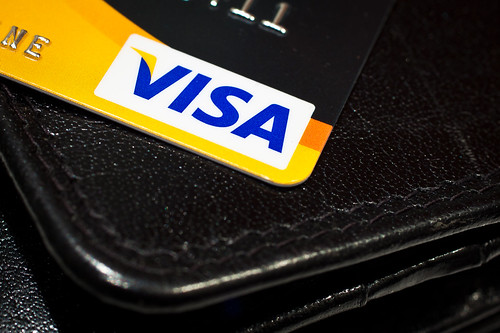 photo credit: Håkan Dahlström
photo credit: Håkan Dahlström
The triathlon world is littered with expensive bikes and fancy gear — part of the undeniable allure of our sport, on some level, is in the gear. Sure there are many triathletes who do without, but most of us enjoy our toys.
The funny thing is, almost none of these things are 100% guaranteed to make you faster. An aero helmet helps — but not if you can’t stay aero for the full 112 miles. Lightweight shoes are faster — but not if they can’t take the beating you lay out over the marathon, reducing you to a walk.
At the end of the day, it’s the training you do to build your fitness and develop your sport-specific skills that matters. Add in the race experience you cultivate over time and you are quickly approaching the upper end of your potential.
On some level, it really makes sense to start significantly upgrading your gear after you have established some fundamental speed. In other words, first look within to find your potential. Once you have done this, move externally to find new ways of maximizing your return on training investment.
Here is a look at each of the three disciplines, and where to draw the line between go do more work and green light for adding gear. Feel free to adjust the metrics to fit your situation or sport; remember our goal here is to get you to focus on the things that you personally can improve upon. If you already have some fancy gear and are looking at more, set a performance benchmark and earn your way to getting faster gear!
The Swim
Swimming is 80% technique, 20% fitness. This means that the vast majority of your swimming, whether early in your year or during your race-prep cycle, should be focused on technique. There are countless drills you can learn to refine your technique that don’t require metronomes, special kicking fins, fist gloves, mono-snorkels, etc. Your best bet is to get into the pool as frequently as possible to drill your technique and become as good as you can.
The Cut Off: The cut-off line is swimming a 500 yard time trial effort in less than 10 minutes (2:00 / 100 yds) or faster.
The Exception: We do recommend investing in a solid one-on-one swim coach or similar learning tool to facilitate your development if you are truly challenged.
The Bike
Cycling fitness is your secret weapon in triathlon. The stronger you become on the bike, the faster you’ll be overall. There are two distinct ways to improve on the bike, and neither one involve dropping cash.
The first is frequency. The more you ride your bike, the better you’ll get at riding. You’ll corner better; you’ll climb better; descending will be second nature; you’ll be able to eat and drink no problem. Soon you’ll be able to ride no-hands. All of this means you’ll simply be better prepared to actually race on race day instead of spending your time focusing on all the logistical things (eating, aid stations, passing, not drafting, shifting, etc).
The second is intensity. The harder you ride your bike, the stronger you’ll get. Given that cycling is such a low-impact sport, almost anyone can get on a bike and start pushing their fitness to the limit. When you get tired, you can coast or shift gears. You can stop anywhere to eat more if required and, in a worst case scenario, you can always use your cell phone to call for a ride.
The Cut Off: This is a flat, time trial effort. The benchmark is 18 miles covered in one hour (for Men), 16.5 miles for women.
The Exception: You do want a solid bike fit. Whether your bike is $500 or $5000, it won’t be worth a dime if you can’t actually ride it.
The Run
On race day it all comes down to the run. You can be the best swimmer or cyclist on the day, but odds are a runner will catch you before the finish line. Success a running is a little trickier than cycling, since it’s a high-impact sport with potential for injury. It’s not as technically challenging as swimming, however, so there is some middle ground.
The best way to improve your running is through frequency and body composition. I mention the body composition stuff only because being lighter means you are faster; how you get there and what is “right” for you depends on a very diverse set of personal factors; I will not cover them here.
Frequency, however, is the most direct way to get faster on the run as a triathlete without risking injury or overtraining. Given the standard training load of swimming and cycling, a high volume run approach will lead to fatigue and breakdown. Instead, break your running up into 4-5 sessions that are mostly less than 45 minutes in duration. Include some intensity and plenty of focus time for running with good form. Add four such runs to one longer session and a few short bricks and you have tons of cumulative run time without the compounding cost of lengthy individual sessions!
The Cut Off: A 5k run in faster than 25:00 (consistent with a sub-4 marathon and sub-2 half marathon).
The Exception: Given the pounding your body takes from running, it’s important to change out your shoes as frequent as every 300-500 miles. Don’t put this expense off; by the time your body lets you know that you need new kicks it might be too late!
Want to Learn More? Take our FREE seminar below!
[button color=”red” size=”large” link=”https://www.endurancenation.us/free-training-seminars/the-short-course-seminar/”]The Short Course Seminar[/button]


Leave a Reply